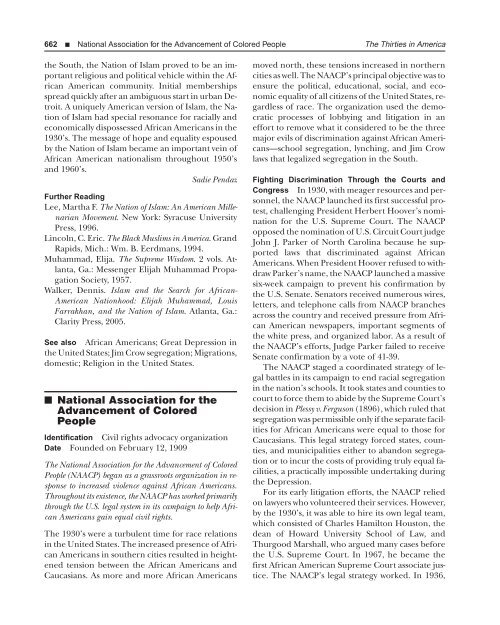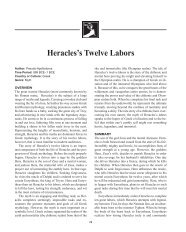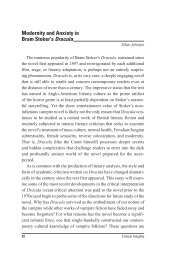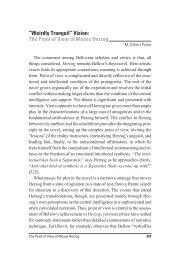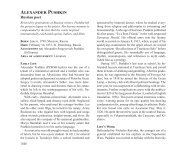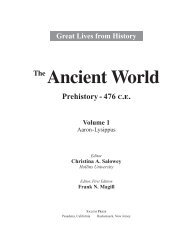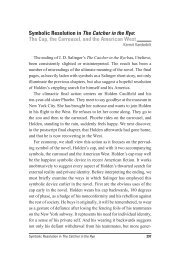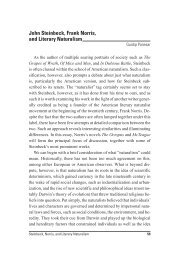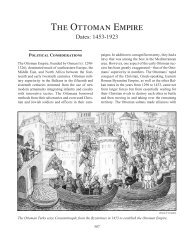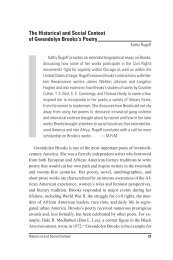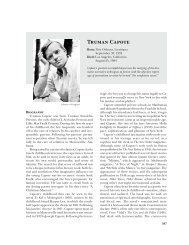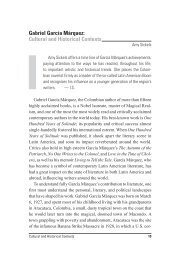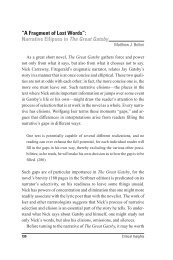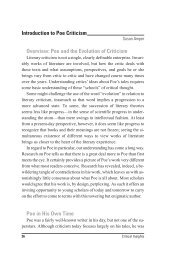NAACP. See National Association for the Advancement - Salem Press
NAACP. See National Association for the Advancement - Salem Press
NAACP. See National Association for the Advancement - Salem Press
You also want an ePaper? Increase the reach of your titles
YUMPU automatically turns print PDFs into web optimized ePapers that Google loves.
662 ■ <strong>National</strong> <strong>Association</strong> <strong>for</strong> <strong>the</strong> <strong>Advancement</strong> of Colored People The Thirties in America<br />
<strong>the</strong> South, <strong>the</strong> Nation of Islam proved to be an important<br />
religious and political vehicle within <strong>the</strong> African<br />
American community. Initial memberships<br />
spread quickly after an ambiguous start in urban Detroit.<br />
A uniquely American version of Islam, <strong>the</strong> Nation<br />
of Islam had special resonance <strong>for</strong> racially and<br />
economically dispossessed African Americans in <strong>the</strong><br />
1930’s. The message of hope and equality espoused<br />
by <strong>the</strong> Nation of Islam became an important vein of<br />
African American nationalism throughout 1950’s<br />
and 1960’s.<br />
Sadie Pendaz<br />
Fur<strong>the</strong>r Reading<br />
Lee, Martha F. The Nation of Islam: An American Millenarian<br />
Movement. New York: Syracuse University<br />
<strong>Press</strong>, 1996.<br />
Lincoln, C. Eric. The Black Muslims in America. Grand<br />
Rapids, Mich.: Wm. B. Eerdmans, 1994.<br />
Muhammad, Elija. The Supreme Wisdom. 2 vols. Atlanta,<br />
Ga.: Messenger Elijah Muhammad Propagation<br />
Society, 1957.<br />
Walker, Dennis. Islam and <strong>the</strong> Search <strong>for</strong> African-<br />
American Nationhood: Elijah Muhammad, Louis<br />
Farrakhan, and <strong>the</strong> Nation of Islam. Atlanta, Ga.:<br />
Clarity <strong>Press</strong>, 2005.<br />
<strong>See</strong> also African Americans; Great Depression in<br />
<strong>the</strong> United States; Jim Crow segregation; Migrations,<br />
domestic; Religion in <strong>the</strong> United States.<br />
■<br />
Identification Civil rights advocacy organization<br />
Date Founded on February 12, 1909<br />
The <strong>National</strong> <strong>Association</strong> <strong>for</strong> <strong>the</strong> <strong>Advancement</strong> of Colored<br />
People (<strong>NAACP</strong>) began as a grassroots organization in response<br />
to increased violence against African Americans.<br />
Throughout its existence, <strong>the</strong> <strong>NAACP</strong> has worked primarily<br />
through <strong>the</strong> U.S. legal system in its campaign to help African<br />
Americans gain equal civil rights.<br />
The 1930’s were a turbulent time <strong>for</strong> race relations<br />
in <strong>the</strong> United States. The increased presence of African<br />
Americans in sou<strong>the</strong>rn cities resulted in heightened<br />
tension between <strong>the</strong> African Americans and<br />
Caucasians. As more and more African Americans<br />
moved north, <strong>the</strong>se tensions increased in nor<strong>the</strong>rn<br />
cities as well. The <strong>NAACP</strong>’s principal objective was to<br />
ensure <strong>the</strong> political, educational, social, and economic<br />
equality of all citizens of <strong>the</strong> United States, regardless<br />
of race. The organization used <strong>the</strong> democratic<br />
processes of lobbying and litigation in an<br />
ef<strong>for</strong>t to remove what it considered to be <strong>the</strong> three<br />
major evils of discrimination against African Americans—school<br />
segregation, lynching, and Jim Crow<br />
laws that legalized segregation in <strong>the</strong> South.<br />
Fighting Discrimination Through <strong>the</strong> Courts and<br />
Congress In 1930, with meager resources and personnel,<br />
<strong>the</strong> <strong>NAACP</strong> launched its first successful protest,<br />
challenging President Herbert Hoover’s nomination<br />
<strong>for</strong> <strong>the</strong> U.S. Supreme Court. The <strong>NAACP</strong><br />
opposed <strong>the</strong> nomination of U.S. Circuit Court judge<br />
John J. Parker of North Carolina because he supported<br />
laws that discriminated against African<br />
Americans. When President Hoover refused to withdraw<br />
Parker’s name, <strong>the</strong> <strong>NAACP</strong> launched a massive<br />
six-week campaign to prevent his confirmation by<br />
<strong>the</strong> U.S. Senate. Senators received numerous wires,<br />
letters, and telephone calls from <strong>NAACP</strong> branches<br />
across <strong>the</strong> country and received pressure from African<br />
American newspapers, important segments of<br />
<strong>the</strong> white press, and organized labor. As a result of<br />
<strong>the</strong> <strong>NAACP</strong>’s ef<strong>for</strong>ts, Judge Parker failed to receive<br />
Senate confirmation by a vote of 41-39.<br />
The <strong>NAACP</strong> staged a coordinated strategy of legal<br />
battles in its campaign to end racial segregation<br />
in <strong>the</strong> nation’s schools. It took states and counties to<br />
court to <strong>for</strong>ce <strong>the</strong>m to abide by <strong>the</strong> Supreme Court’s<br />
decision in Plessy v. Ferguson (1896), which ruled that<br />
segregation was permissible only if <strong>the</strong> separate facilities<br />
<strong>for</strong> African Americans were equal to those <strong>for</strong><br />
Caucasians. This legal strategy <strong>for</strong>ced states, counties,<br />
and municipalities ei<strong>the</strong>r to abandon segregation<br />
or to incur <strong>the</strong> costs of providing truly equal facilities,<br />
a practically impossible undertaking during<br />
<strong>the</strong> Depression.<br />
For its early litigation ef<strong>for</strong>ts, <strong>the</strong> <strong>NAACP</strong> relied<br />
on lawyers who volunteered <strong>the</strong>ir services. However,<br />
by <strong>the</strong> 1930’s, it was able to hire its own legal team,<br />
which consisted of Charles Hamilton Houston, <strong>the</strong><br />
dean of Howard University School of Law, and<br />
Thurgood Marshall, who argued many cases be<strong>for</strong>e<br />
<strong>the</strong> U.S. Supreme Court. In 1967, he became <strong>the</strong><br />
first African American Supreme Court associate justice.<br />
The <strong>NAACP</strong>’s legal strategy worked. In 1936,


